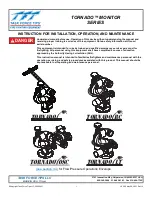
Operating Manual Xenotest
®
220/220+
- 38 -
6.6.3 Power supply
The XENOSENSIV RC is battery-operated.
The battery has an average life of approx. three to six
months depending on the operating hours of the test
instrument.
NOTE – sleep mode
There is no need to remove the battery when the instru-
ment is not in use. The sensor has a sleep mode. This is
activated when the instrument is switched off.
6.6.3.1 Monitoring of the battery voltage
The battery voltage is checked when starting and during
the test. If the battery voltage drops too low, the test is
interrupted and an error message is displayed. The battery
must be changed to continue the test. We recommend you
to order a new spare battery immediately after changing the
battery. This helps you to avoid unnecessary downtimes.
Original spare batteries can be ordered from Atlas
(ID No. 56055009).
Please observe the instructions for disposal of the battery.
NOTE – battery voltage
If the battery voltage is too low, the test is interrupted.
6.6.3.2 Changing the battery (see fig. 29)
WARNING – DANGER OF EXPLOSION
Only original spare batteries may be used. If
other batteries are used there is a danger of
explosion due to the high operating tempera-
tures in the sensor!
1. Unscrew the cover
1
, carefully disconnect the plug
2
and remove the battery.
WARNING – DANGER OF EXPLOSION
When changing without plastic sleeves there
is a danger of explosion due to short-circuits!
The battery must always be fitted with plastic
sleeves
3
before inserting into the battery
chamber.
2. Push two plastic sleeves
3
onto the new battery.
3. Make the connection
2
.
4. Insert the battery into the sensor.
5. Check the seal
4
and screw the cover
1
back on.
A desiccant plate is inserted in the battery compartment
at the factory. This helps to prevent condensation.
The material of the plate is completely non-toxic. You
can dispose of the plate when necessary as part of your
normal waste disposal.
1
2
3
4
Fig. 29
6
Start up
















































